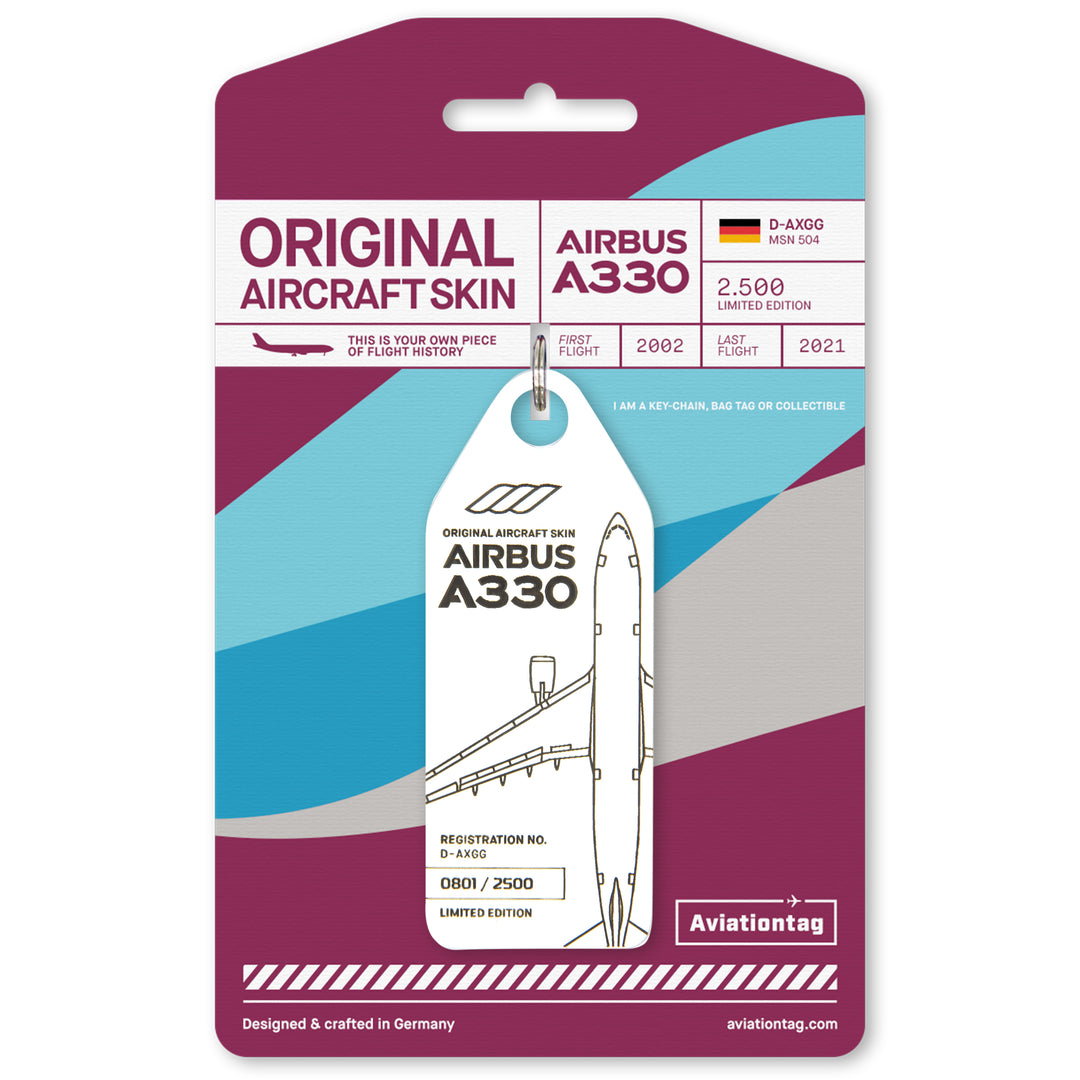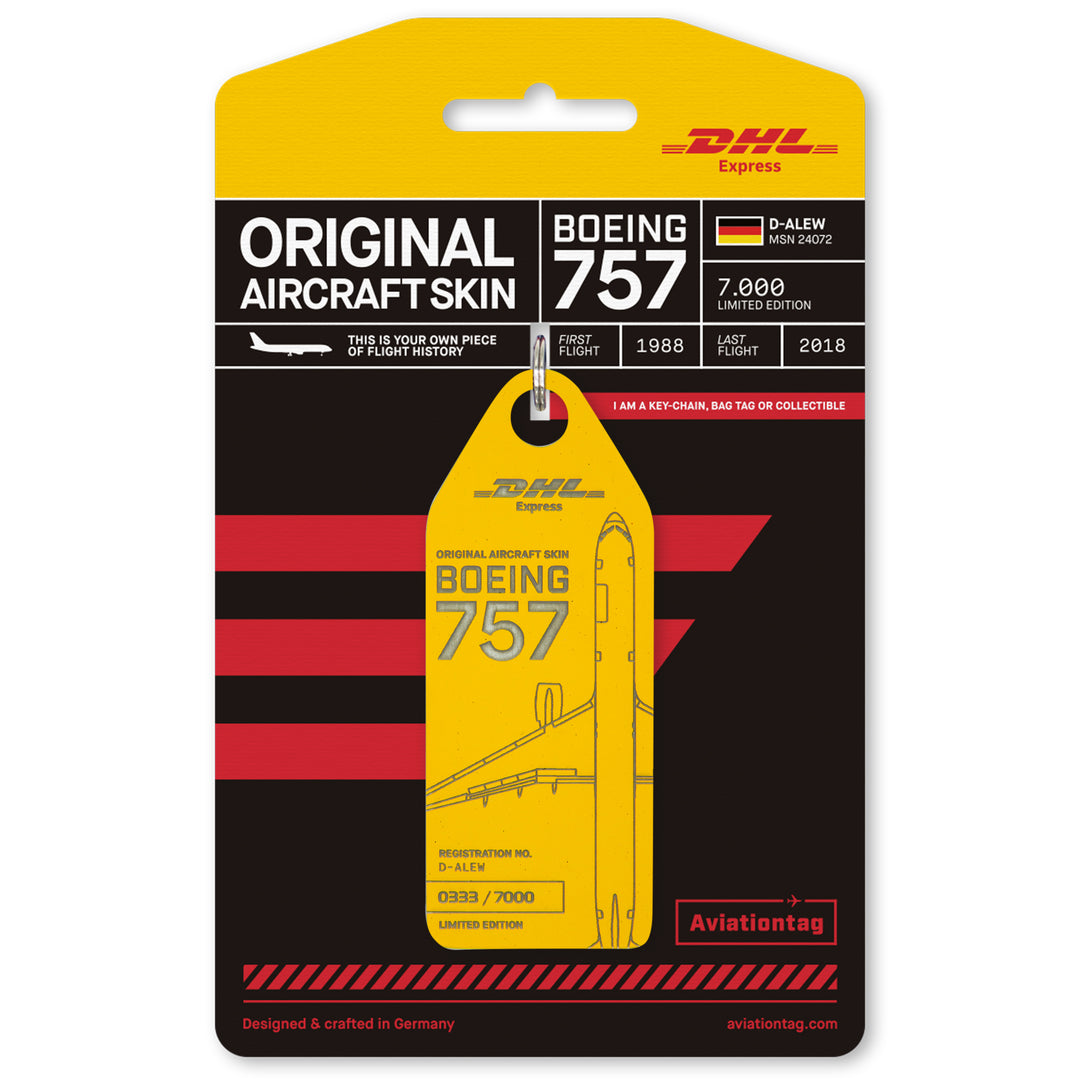Do you remember when we initiated our Collector's Quality Circle (CQC) a while ago to improve the quality and accuracy of the aircraft blueprints on the Aviationtags? Quite a bit of time has passed, many editions have been released and the accuracy of the laser engravings has improved a lot ever since.
We wanted to give you some insights on the process and how much work is actually involved in designing the Aviationtag for each and every edition. Besides our steady Collector's Quality Circle members Henry and Robin there is always a third person involved that changes for every edition. For our former United Airlines and FedEx DC-10 series, we had the honor of Airbus A220 pilot Patrick Balzer joining the board.
In todays' guest post, Patrick explains how the process worked and which things were taken into consideration with some technical background. If you also want to read about the (hi)story of the N326FE, please click here.

Throughout the design process of the DC-10 Aviationtag, we were guided by the following principles:
- to show the design of a freight aircraft, which reflects the last flown version
- to illustrate the aircraft configuration without extended slats and flaps
- to present only movable parts on the wings, such as slats, flaps, ailerons and speed brakes
- to map only the lines which divide the aircraft’s movable parts (and to exclude the lines which exemplify the different metal plates on the inner aileron for example).

In spring 2005 the composite radome nose had to be replaced by a FedEx white color nose. As our DC-10 never got the white FedEx paint scheme, this detail is a reminiscence of their service here.

Compared to other airliners, the cockpit windows of the DC-10 are quite big. In particular, the size of the rear windows is outstanding. The starboard side is covered by the flight engineer panel. But on the port side, the person on the jump seat behind the commander has a fantastic view. One can see the notable size difference of the windows and their unique shape on the Aviationtag.
The doors of the DC-10 and MD-11 are not opened to the outside. They are electrically pulled up in the upper fuselage. The size of the forward doors is 0.81 x 1.93 m. The others measure 1.06 x 1.93 m to allow two persons to board the aircraft simultaneously.
As the forward fuselage gets narrower towards the cockpit, one can see a bigger part of the forward doors on the Aviationtag from a bird’s-eye view compared to other doors.
During the conversion from a passenger to a freight aircraft for United Airlines in 1997, the 3.70 m wide and 2.60 m high cargo door was built in and the left door number 2 was removed.
Due to this modification the connection between wing and fuselage is a curved line.
During the production of the DC-10 (1970-88) some upgrades were developed. It was the decision of the customer to apply them or not and they also had the opportunity to retrofit already delivered aircrafts. Our DC-10 was delivered to Laker Airways in March 1980 with all the available features at that time such as forward wing/body fairing, long aft wing/body fairing, vertical stabilizer root fairing and horizontal stabilizer/body fairing.
The slats are moving forward to increase the maximum lift coefficient during takeoff and landing. The two inboard slats are a bit narrower than the outer ones. On most of the pictures one cannot see this, as the airlines painted the wing leading edge with a straight line. The inboard slats have three positions: retract, takeoff and land.
This panel has to move down before the inboard slats can move forward perpendicular to the wing leading edge. To allow this, the panel is a little bigger than the inboard slats.
There are 6 outboard slats on the DC-10 (5 are shown on the Aviationtag). Although there are different sections, they move together attached to the heaviest single titanium item - the 274 kg slat guide rail. They have four positions: retract, auto-extend, takeoff and land. The auto-slat system is controlled by the stall warning system, which partially extends the outboard slats at the onset of a stall warning.
The lateral control is comprised of inboard and outboard ailerons, with each surface powered by two of the three hydraulic systems. Aileron lateral control is augmented on the down going wing by wing spoilers operation in proportion to yoke input and/or speed brake usage. The outboard ailerons are only active at low speed with the flaps extended more than 15° or the slats extended or the alternate gear extension lever is raised. The outboard ailerons can move 22.5° up or down.
11 Outboard Flaps (longer on series 30) In the Aviationtag top-view only the size of the outboard flaps makes it possible to distinguish a DC-10-10 from a DC-10-30. During the 3.05 m wing stretching for series 30, the outboard aileron, the outboard flap and the 6th slat were extended. A very special feature of the flap system of the DC-10 is the possibility to select a takeoff flap position in unlimited increments from 1° to 25°. Furthermore, there is an automatic flap limit system: whenever the flaps extend between 20° and 50°, the system provides automatic retraction (or prevents extension) to protect structural integrity in the event that selected flap position airspeed is exceeded. Whenever the airspeed is reduced, the flaps move to the selected position (with a manual override for airspeed malfunctions).
The spoiler system has five major operation modes:
- lateral control augmentation
- automatic extension upon touchdown to destroy lift
- automatic extension upon application of reverse thrust during rejected takeoff
- manual extension during landing or rejected takeoff
- selectable extension inflight as speed brakes
Lateral control at all speeds
Please refer to point 12 for explanation. Lateral control augmentation at all speeds
The flaps on the DC-10 are double-slotted, means that there are two different flap segments behind each other with a slot for air movement between them and the wing. But this is just visible with a high flap setting (maximum is 50°). With retracted flaps, the second flap segment is visible on the inboard flap. The second segment of the outboard flap, however, remains inside the wing.
The curved connection is part of the upgrade options to reduce drag.
The middle engine of the DC-10 is not only the most striking design feature, but also a masterpiece of engineering. The DC-10 and its successor, the MD-11, are the only aircrafts with a middle engine integrated completely in the tail fin. Other trijet aircrafts use a S-shaped intake duct to guide air to an engine situated in the fuselage. Indeed, the big challenge during the DC-10 development was to transfer the enormous forces of the middle engine to the fuselage. This was achieved by using four forged bars, which are visible as blue stripes on the picture below:

As the middle engine has the same upper suspension as the wing-engines, it doesn’t matter which engine has to be replaced. For all repairs outside of the maintenance stations, there is a work platform built into the rear fuselage and self-powered winches and cables can lower and raise the engine from ground level.
An interesting detail: the outer diameter of the middle engine (2.75 m) is about 35 cm wider as the fuselage of the Douglas DC-3. Each engine of the DC-10 has a metal intake lip. On our DC-10, a small part of the middle air intake tube is also kept in bare metal. This was a common paint scheme on most of the DC-10 planes. The wide metal ring on the middle engine is shown on the Aviationtag. However, the metal intake lip on the wing engine is too narrow for the laser engraving. Last but not least, I would like to thank the Aviationtag team for the great collaboration. I hope that my explanations help to better understand the details of the DC-10 Aviationtag (C) Patrick Balzer, April 2021









Leave a comment